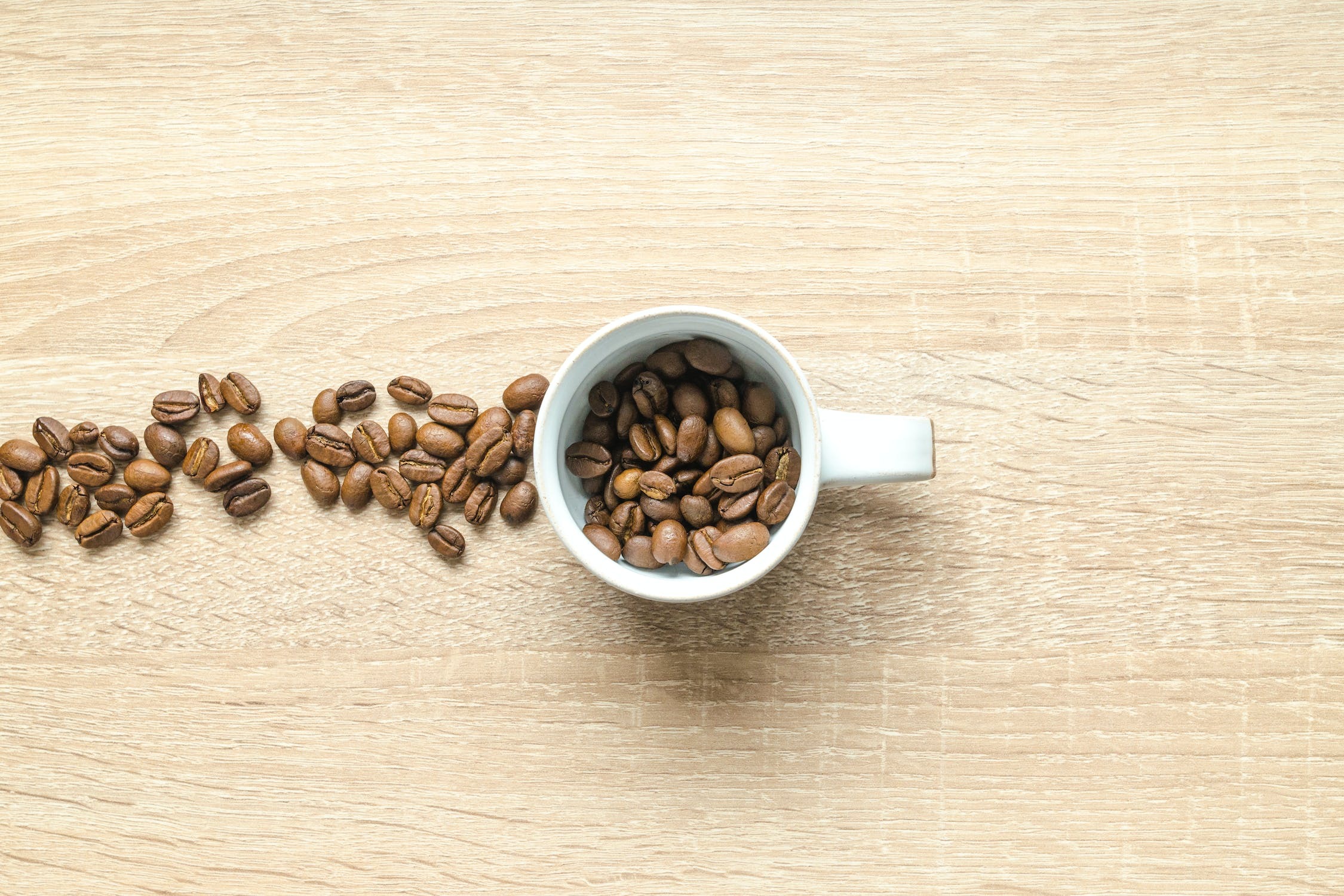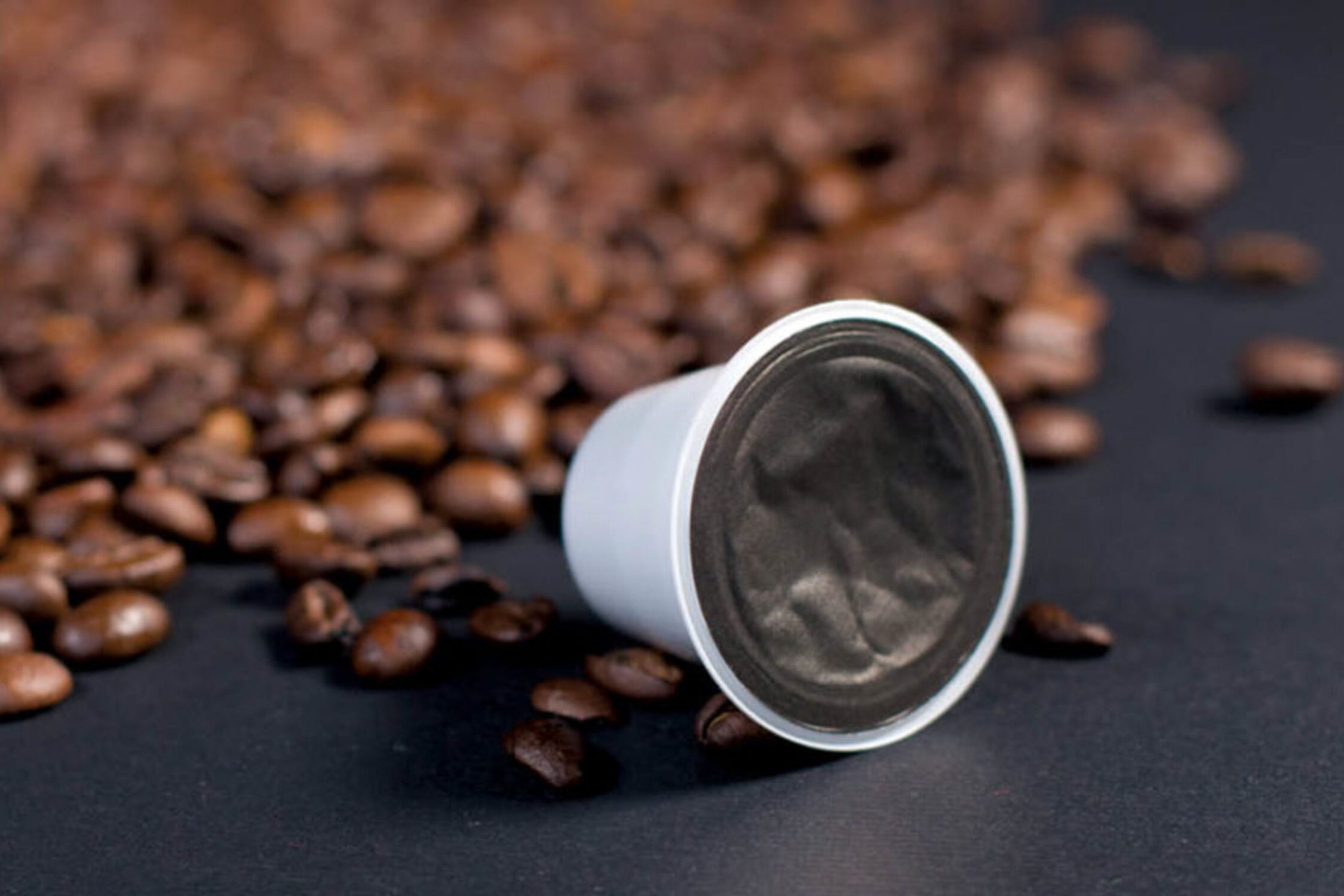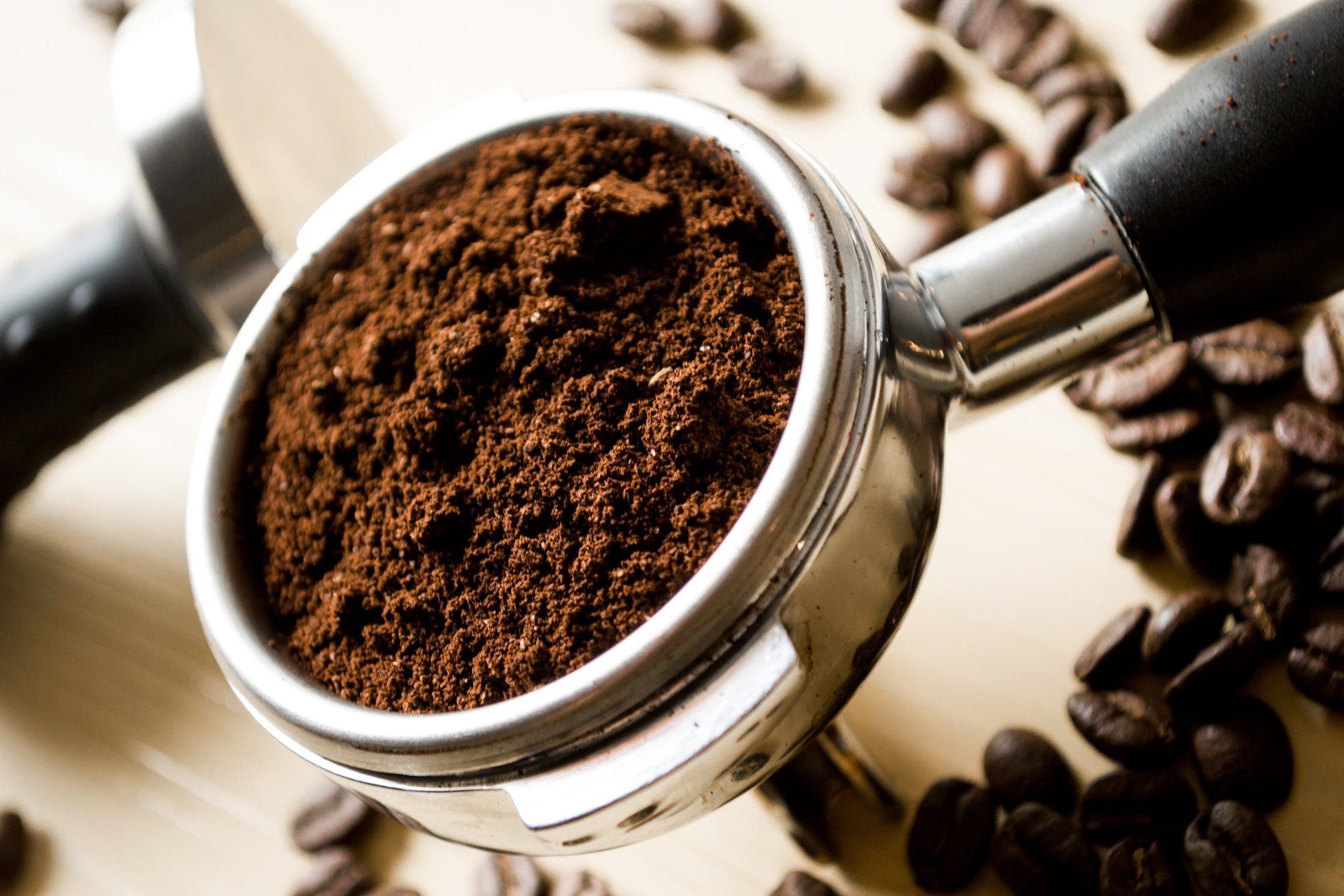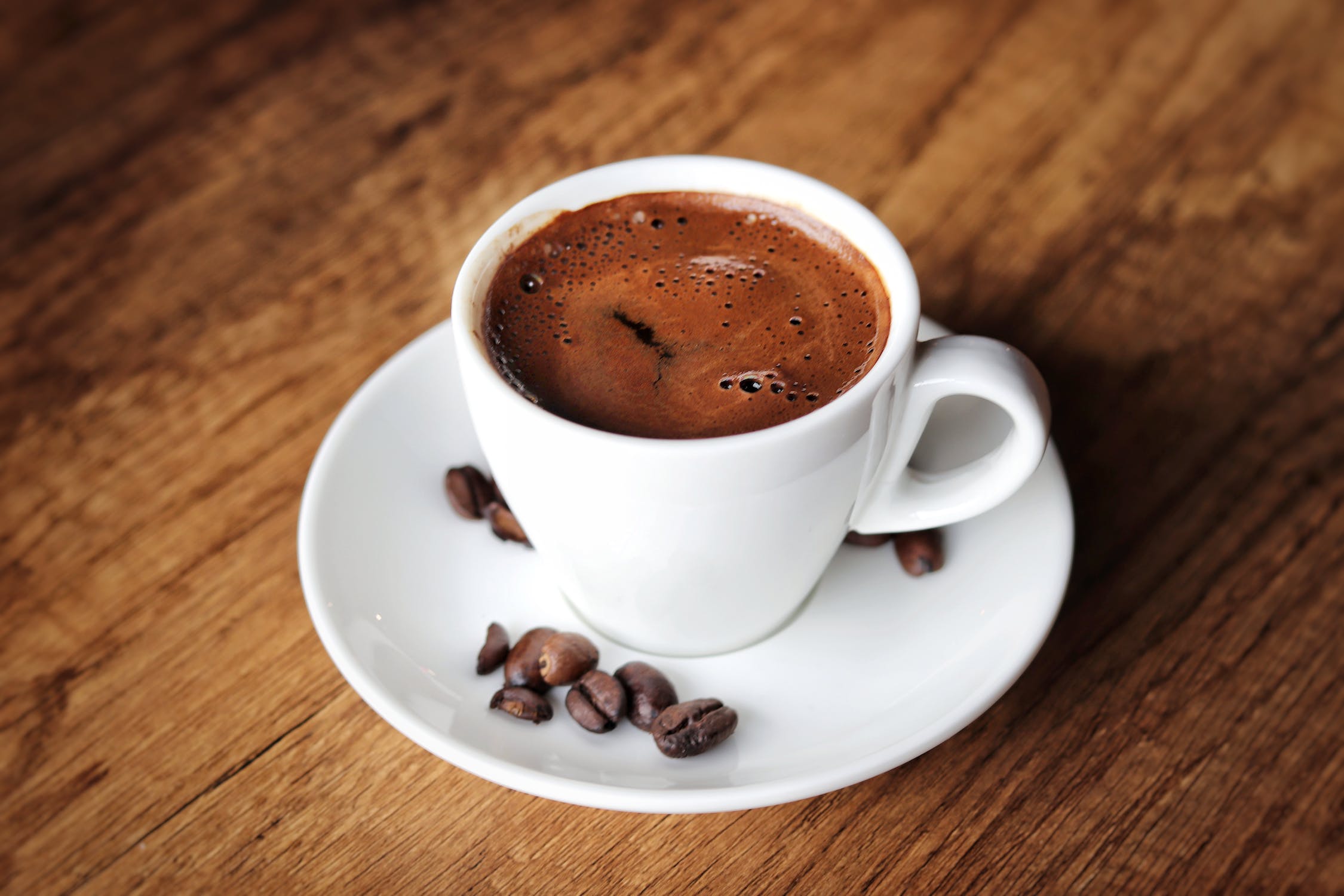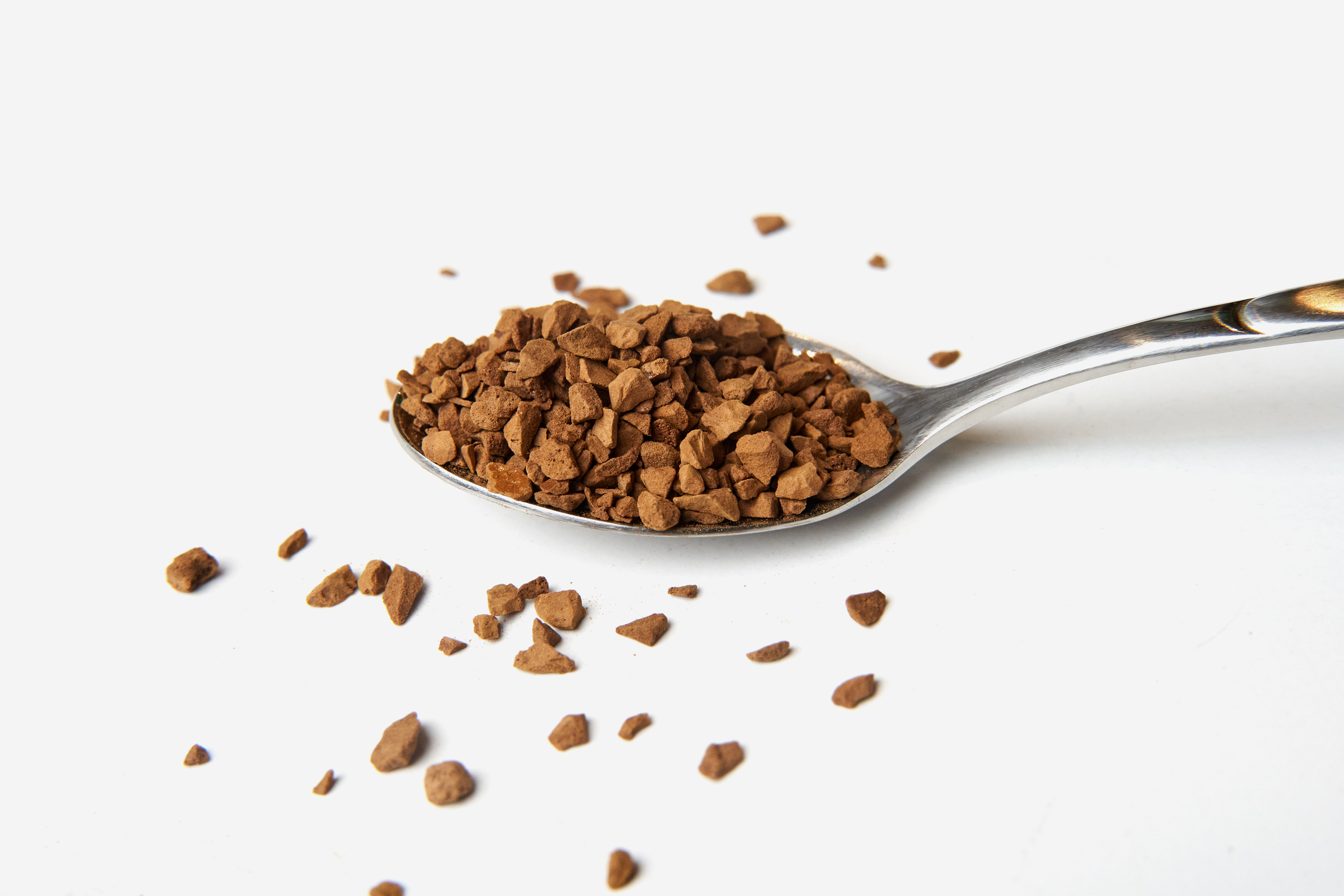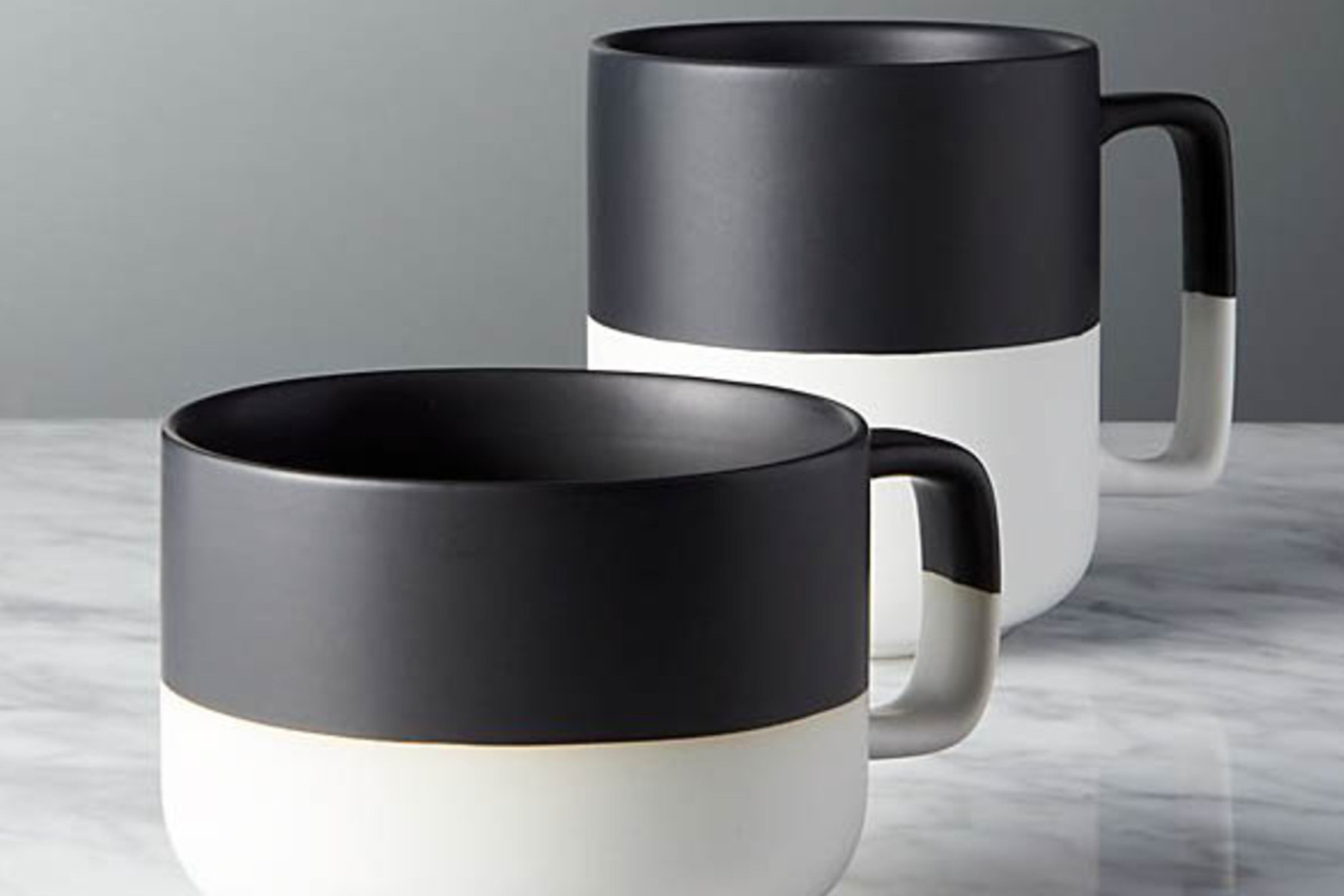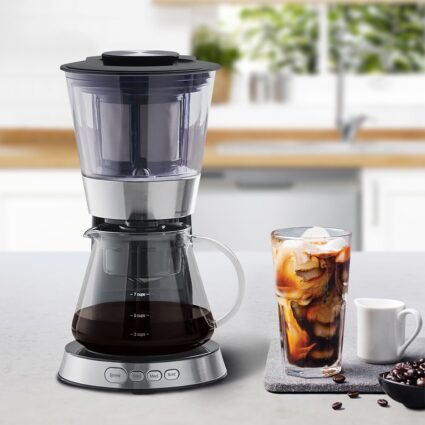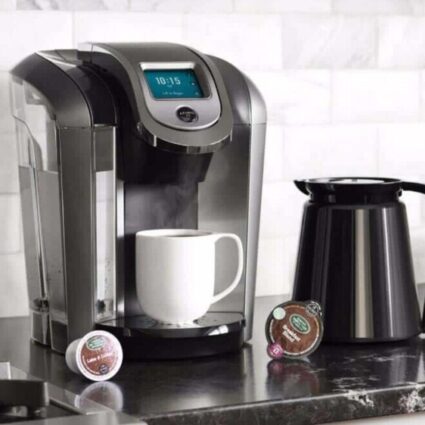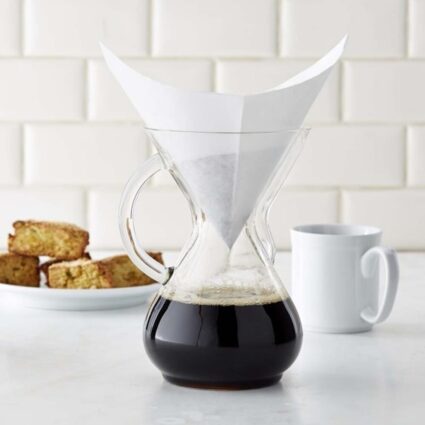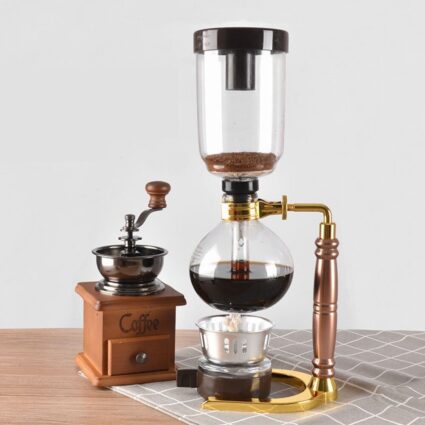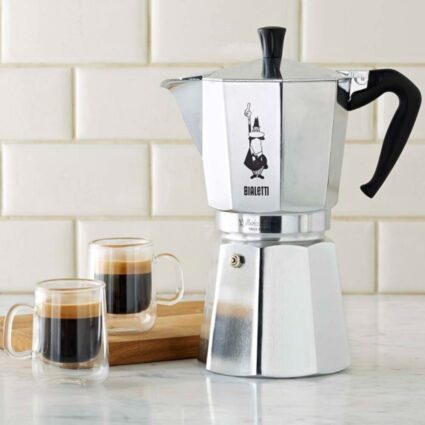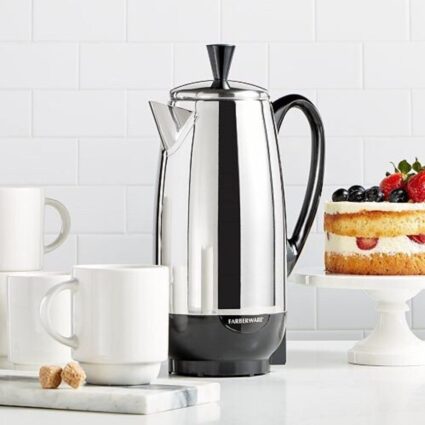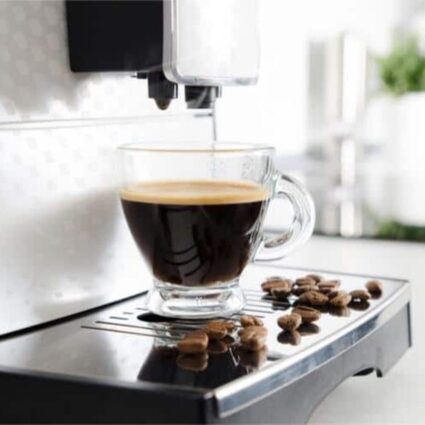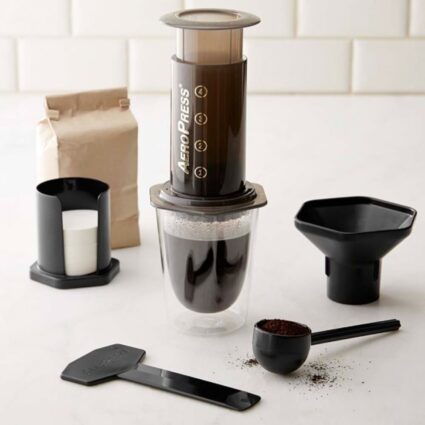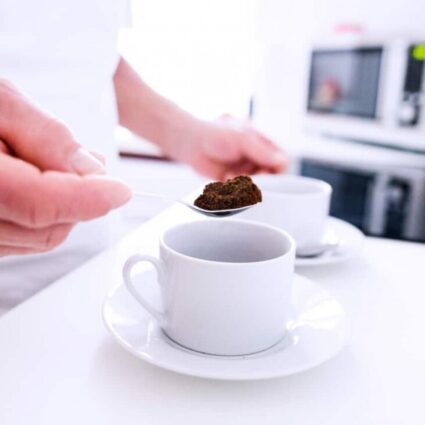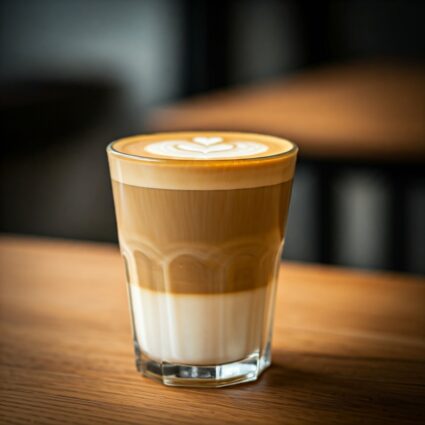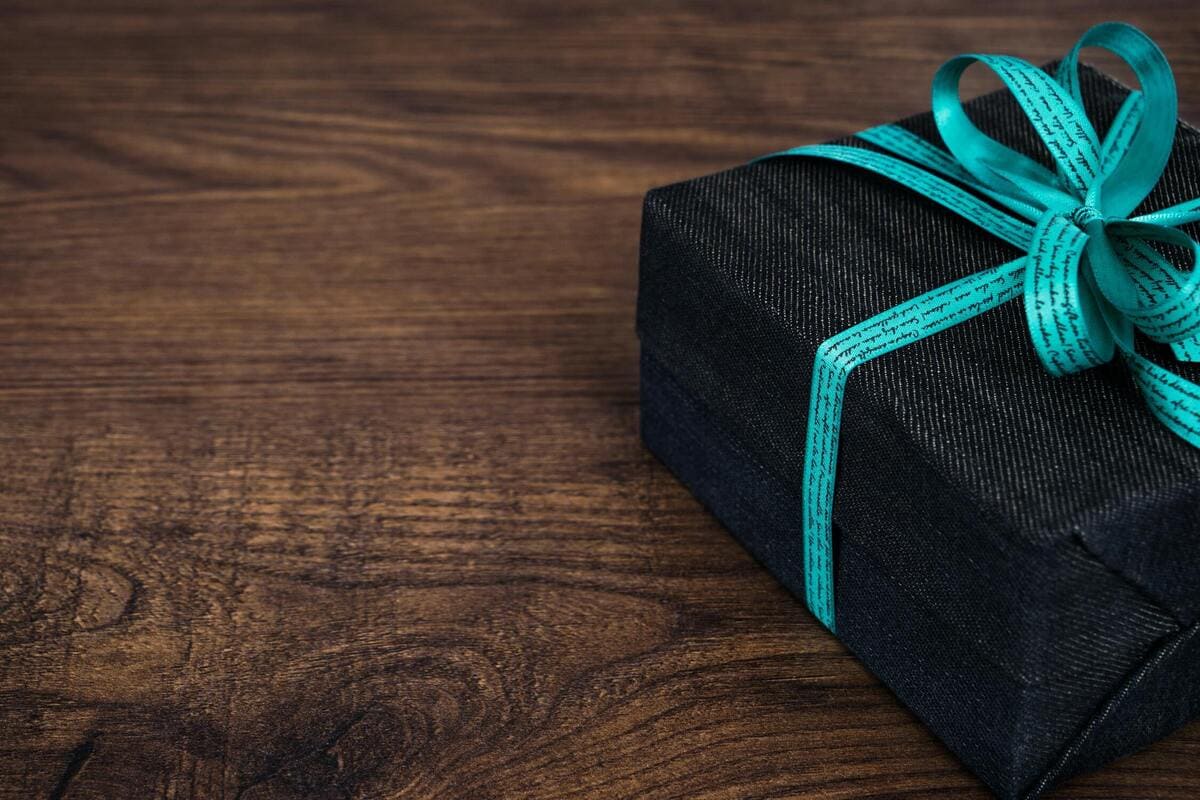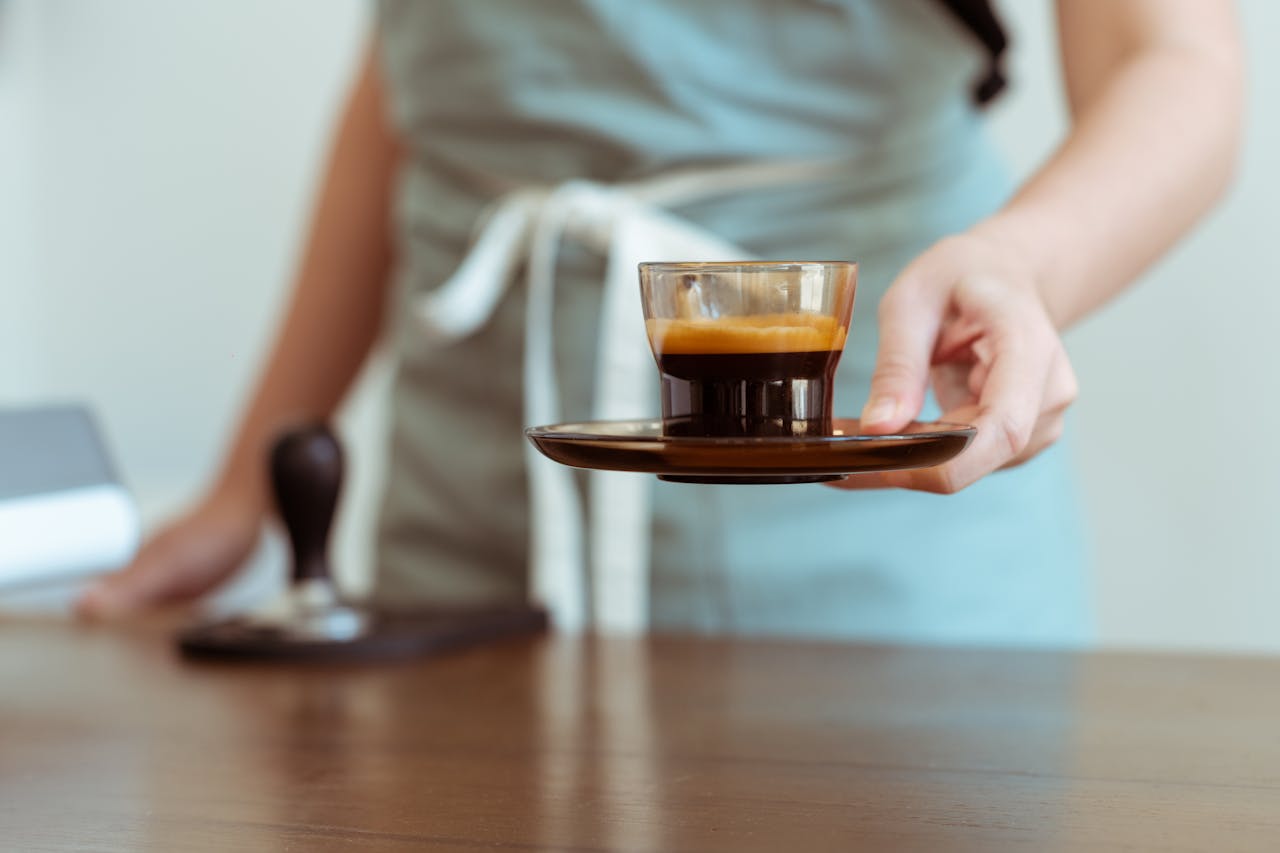INSTANT COFFEE
Speed and quality
DESCRIPTION
Instant coffee is made in large industrial pots. Coarse coffee grounds are brewed for a long time. The resulting mass is dried and compressed into crystals or granules under high pressure.
You can stored Instant Coffee in the packaged form for a long time. Boiling water quickly dissolves instant coffee, creating a drink similar to brewed coffee.
Robusta beans known for their high caffeine content and robust flavor are ideal for instant coffee production. Due to the ability to withstand the processing required to create Instant Coffee Robusta is better fit than Arabica. As a result of long-term brewing at high temperatures, coffee somehow loses a number of flavor characteristics. For this reason, Arabica beans, known for their complex flavors, are not ideal for instant coffee production.
The origin of instant coffee has a rather complicated history.
David Strang, a New Zealander, invented and patented actual instant coffee in 1890.
Satori Kato, a Japanese man working in Chicago, also claimed to have invented instant coffee in 1901.
According to the British “New Scientist” magazine, instant coffee was created in Chicago by order of the American army.
George Constant Washington, an Englishman living in Guatemala, invented the first mass-producible instant coffee in 1906. He released the product as “Red E Coffee” in 1909.
In 1938, Brazil, a nation synonymous with coffee, faced a surplus crisis. To address this challenge, the Brazilian government partnered with Nestlé to develop a revolutionary solution: instant coffee. The result was Nescafé, a groundbreaking product that transformed the global coffee industry.
Instant Coffee became popular in the US after World War 2 and then spread around the world.
Currently, instant coffee is widely recognized in all over the world. around the world.
PREPARATION
- Pour 1-1.5 teaspoons of coffee into the mixer for each cup. (you can increase or decrease the amount of coffee if you wish)
- Add a small amount of boiling water (enough to slightly cover the coffee)
- If desired, add sugar (amount as desired)
- Stir the coffee quickly for about 5 minutes (until golden foam appears on the coffee)
- Add hot water near boiling temperature
- Mix until a homogeneous mass is obtained
- Wait about 1 minute until the coffee “rests”
- Pour into bowls and serve
DIRECTIONS
| Coffee Type | 100% Robusta |
| Roasting Level | Dark (French Roast)
Burned (Italian Roast) |
| Grind Size | Granules (Instant Coffee) |
| Water Temperature | Almost Boiling: 197 ÷ 205 ° Fahrenheit |
| Coffee / Water Ratio | 4-5 gr coffee / 100 ml water
(1 tablespoon for every cup) |
| Preparation Time | 5-7 minutes |
| Serving Size | 180 ml (6 Fl Oz) |
| Caffeine Amount in 1 Serving | 47 mg |
| Nutritional Value | 3 Calories |
| Daily Dosage | No more than 5 Cups |
| Serving Method | – As is;
– With Milk or Cream; – With Sweetener or Dessert. |
W A R N I N G !
The given numbers are average and may be different from the actual values.
FACTS
Instant coffee, primarily made from Robusta beans from Vietnam and Brazil, accounts for 13% of the global coffee market. It offers a quick and convenient caffeine fix.
This convenient coffee format gained significant popularity during World War I and World War II, particularly among soldiers. Its ease of preparation made it a valuable resource in challenging conditions.
While often referred to as “instant coffee,” it’s also known as “soluble coffee” in many non-English-speaking countries. This coffee isn’t only enjoyed as a beverage but also finds its way into various cakes and other desserts.
DESCRIPTION
Instant coffee is made in large industrial pots. Coarse coffee grounds are brewed for a long time. The resulting mass is dried and compressed into crystals or granules under high pressure.
You can stored Instant Coffee in the packaged form for a long time. Boiling water quickly dissolves instant coffee, creating a drink similar to brewed coffee.
Robusta beans known for their high caffeine content and robust flavor are ideal for instant coffee production. Due to the ability to withstand the processing required to create Instant Coffee Robusta is better fit than Arabica. As a result of long-term brewing at high temperatures, coffee somehow loses a number of flavor characteristics. For this reason, Arabica beans, known for their complex flavors, are not ideal for instant coffee production.
The origin of instant coffee has a rather complicated history.
David Strang, a New Zealander, invented and patented actual instant coffee in 1890.
Satori Kato, a Japanese man working in Chicago, also claimed to have invented instant coffee in 1901.
According to the British “New Scientist” magazine, instant coffee was created in Chicago by order of the American army.
George Constant Washington, an Englishman living in Guatemala, invented the first mass-producible instant coffee in 1906. He released the product as “Red E Coffee” in 1909.
In 1938, Brazil, a nation synonymous with coffee, faced a surplus crisis. To address this challenge, the Brazilian government partnered with Nestlé to develop a revolutionary solution: instant coffee. The result was Nescafé, a groundbreaking product that transformed the global coffee industry.
Instant Coffee became popular in the US after World War 2 and then spread around the world.
Currently, instant coffee is widely recognized in all over the world.
PREPARATION
- Pour 1-1.5 teaspoons of coffee into the mixer for each cup. (you can increase or decrease the amount of coffee if you wish)
- Add a small amount of boiling water (enough to slightly cover the coffee)
- If desired, add sugar (amount as desired)
- Stir the coffee quickly for about 5 minutes (until golden foam appears on the coffee)
- Add hot water near boiling temperature
- Mix until a homogeneous mass is obtained
- Wait about 1 minute until the coffee “rests”
- Pour into bowls and serve
DIRECTIONS
| Coffee Type | 100% Robusta |
| Roasting Level | Dark (French Roast)
Burned (Italian Roast) |
| Grind Size | Granules (Instant Coffee) |
| Water Temperature | Almost Boiling: 197 ÷ 205 ° Fahrenheit |
| Coffee / Water Ratio | 4-5 gr coffee / 100 ml water
(1 tablespoon for every cup) |
| Preparation Time | 5-7 minutes |
| Serving Size | 180 ml (6 Fl Oz) |
| Caffeine Amount in 1 Serving | 47 mg |
| Nutritional Value | 3 Calories |
| Daily Dosage | No more than 5 Cups |
| Serving Method | – As is;
– With Milk or Cream; – With Sweetener or Dessert. |
W A R N I N G !
The given numbers are average and may be different from the actual values.
FACTS
Instant coffee, primarily made from Robusta beans from Vietnam and Brazil, accounts for 13% of the global coffee market. It offers a quick and convenient caffeine fix.
This convenient coffee format gained significant popularity during World War I and World War II, particularly among soldiers. Its ease of preparation made it a valuable resource in challenging conditions.
While often referred to as “instant coffee,” it’s also known as “soluble coffee” in many non-English-speaking countries. This coffee isn’t only enjoyed as a beverage but also finds its way into various cakes and other desserts.

